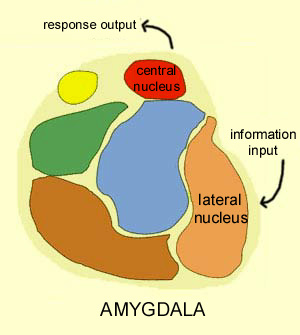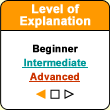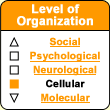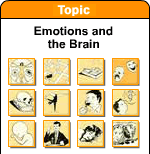|
|
|
|
 |
Fear,
Anxiety and Anguish |
 |
|
|
|

| Just as we do for most other structures
in the brain, we have two amygdalae, one in each hemisphere.
The left amygdala seems to be more sensitive to voice intonations,
while the right amygdala responds more to facial expressions. |
|
|
 |
|
Just because
a given region of the brain is assigned a particular name
rarely means that all of its neurons are homogeneous. On
the contrary, these neurons are typically organized into
specialized sub-groups. Each of these specialized groups
of neurons within a given structure is called a “nucleus”.
The
amygdala, a brain structure that plays a key role
in fear reactions, contains a number of distinct nuclei.
The lateral nucleus seems to act as the main gateway
into the amygdala. It is through this nucleus that the
amygdala receives messages warning of danger, whether
they come by the
fast, direct route from the thalamus or by the slower
route via the cortex. |
Another nucleus, the central nucleus,
acts as the exit from the amygdala. The commands for the bodily
responses associated with fear leave the amygdala from the central
nucleus. In between the lateral nucleus and the central nucleus, several
other nuclei gather information, process it, and send it
on out via the central nucleus. Though not all of these nuclei
are involved in the fear reaction, they do represent the centre
of the body’s alarm system.
|
|





